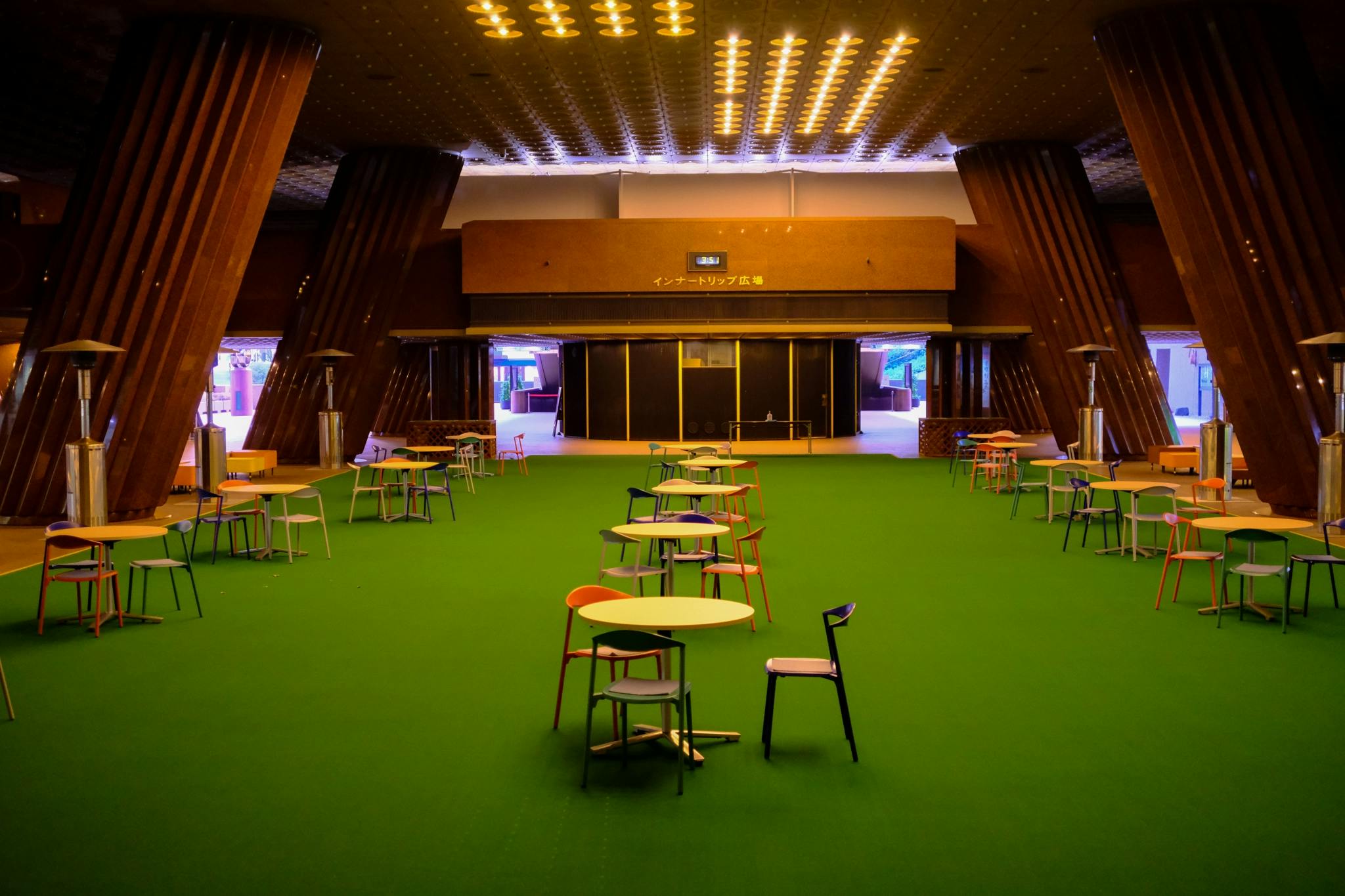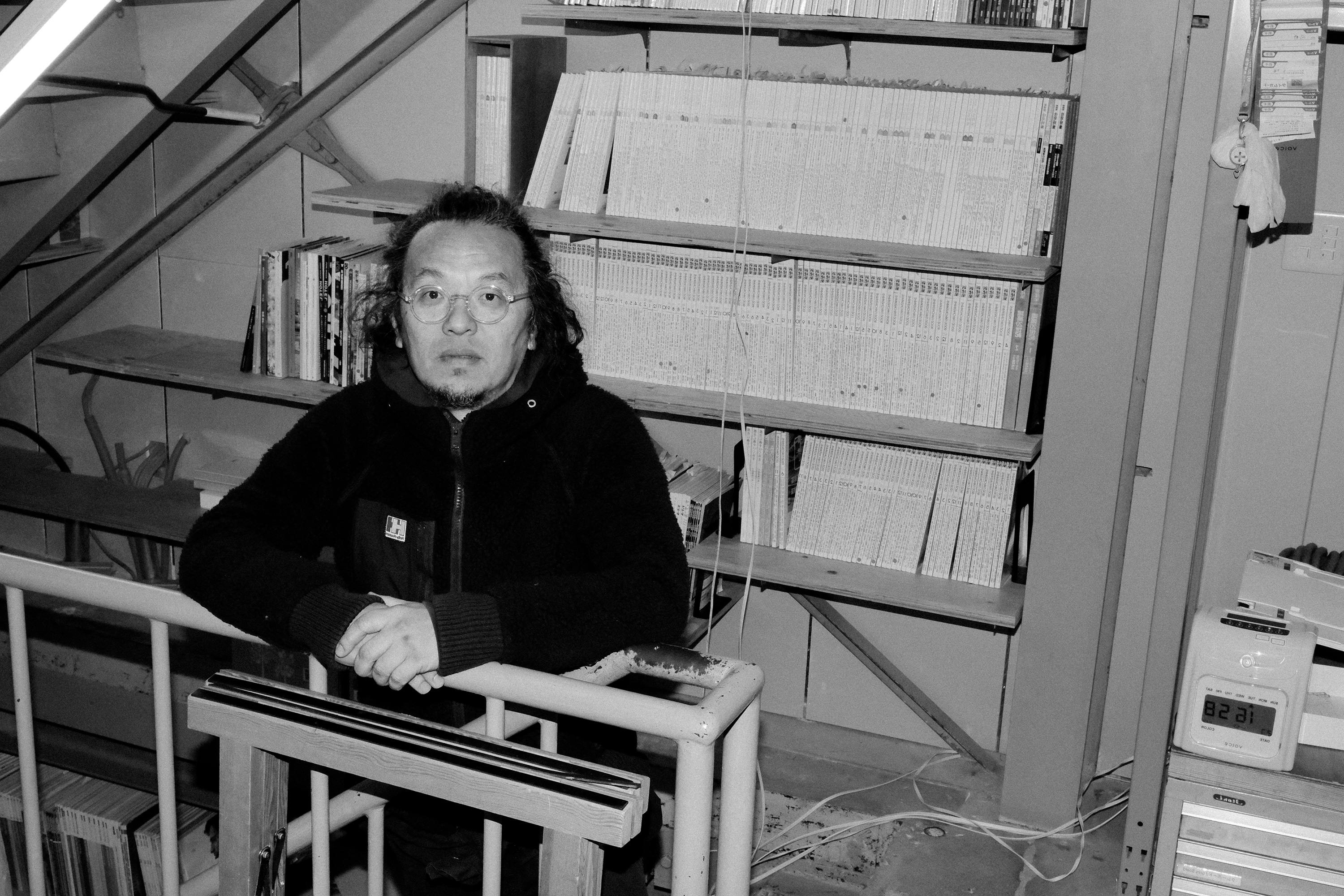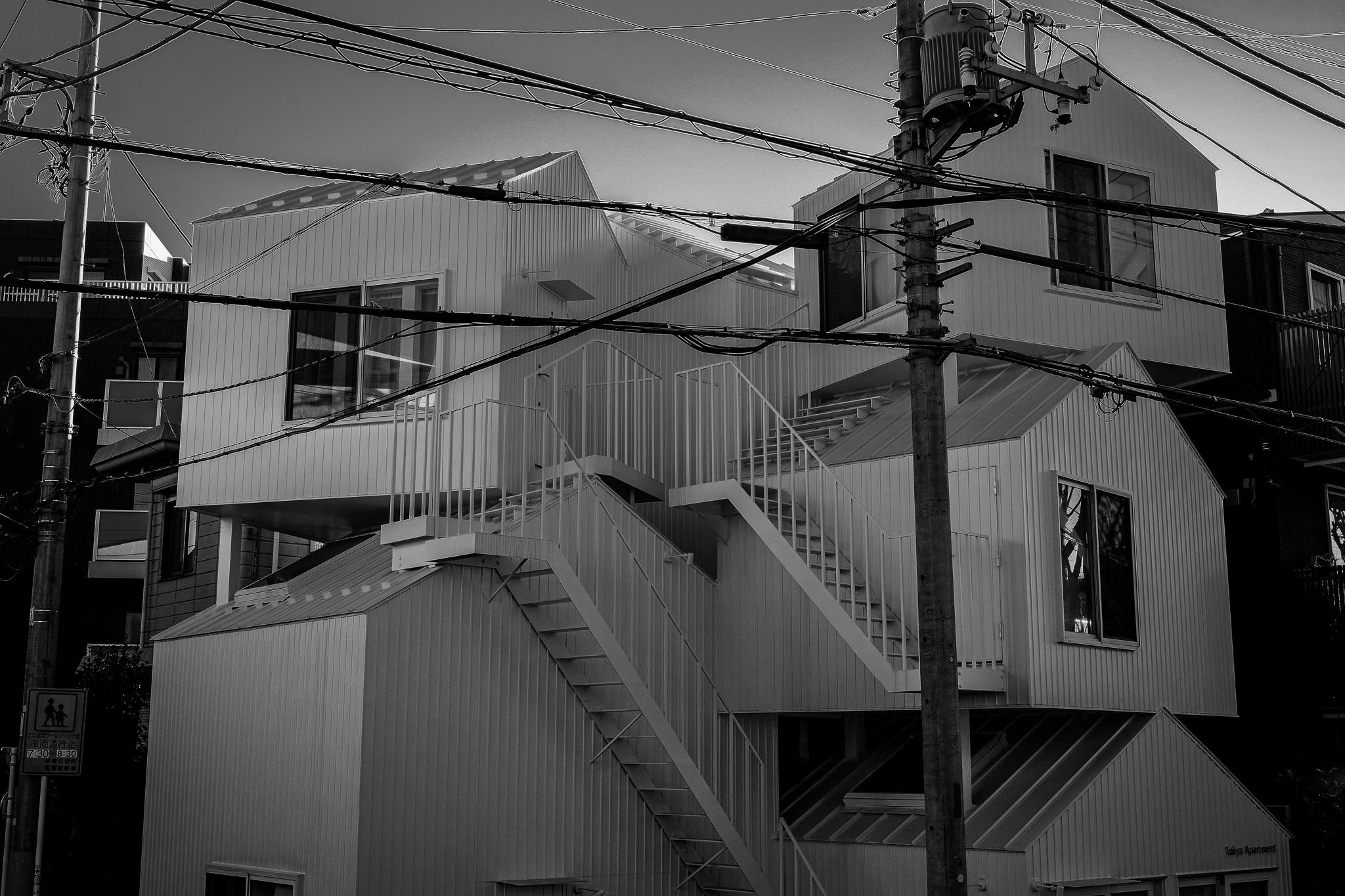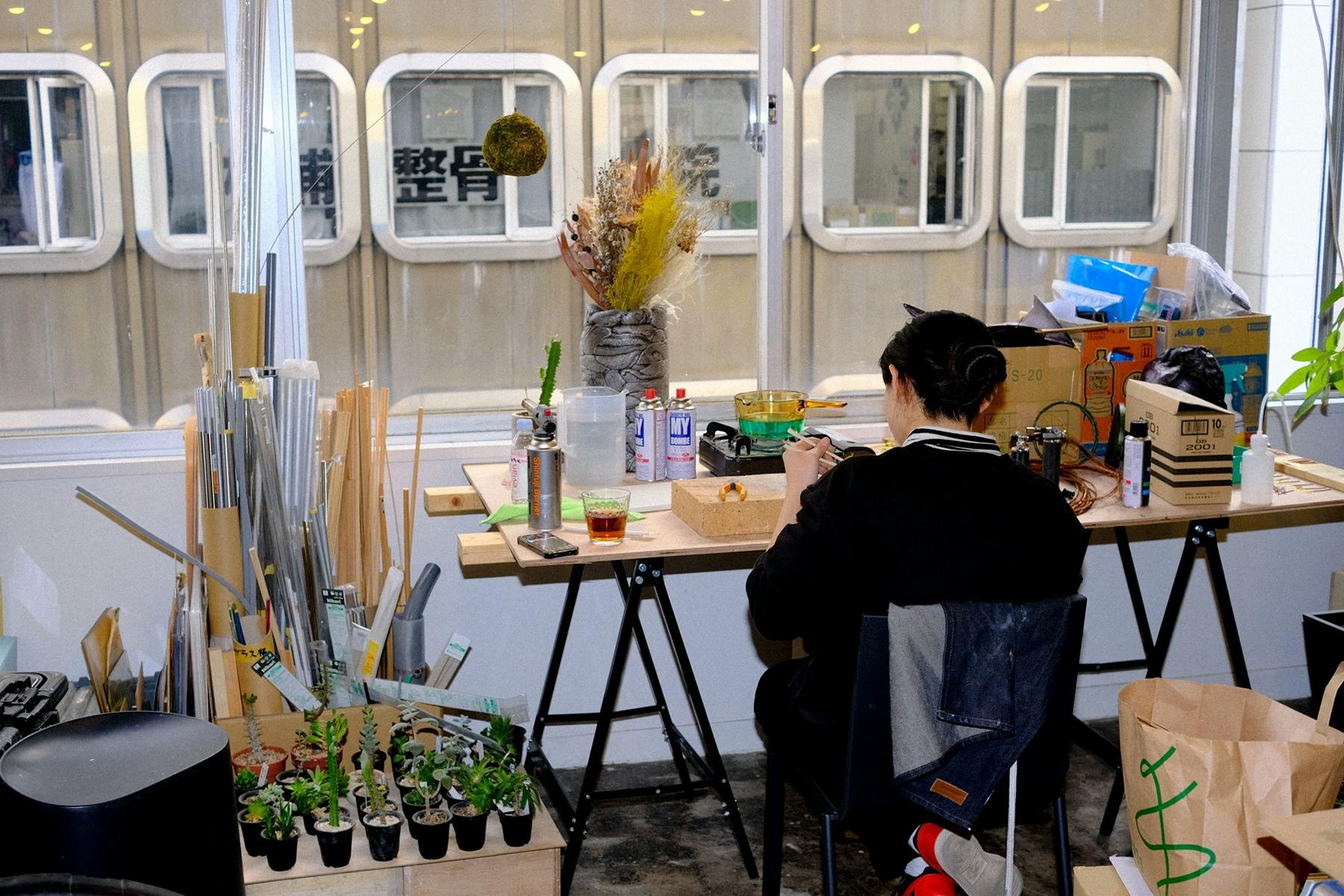
Studio Visit with we+
We visit the Tokyo studio of design and research studio, we+, founded by Toshiya Hayashi and Hokuto Ando who disrupt the local Japanese design protocol and pioneer new ways to transform 'indigenous waste materials' into collectible design
we+, founded by Toshiya Hayashi and Hokuto Ando, are the pioneers of sustainable collectible design in Japan, period. After returning from studies in London, the duo's eyes were opened to another way of design thinking and problem-solving, which would be seen as 'unorthodox' by their Japanese contemporaries. In a rigid system full of protocol and expectations, we+ was born not only to challenge and inspire evolution to the local status quo but in search for new ways to research and design sustainably. Working with 'indigenous materials', a term coined by the studio, such as waste styrofoam and seaweed – these designers are inspiring new ways to build a creative design practice and develop new materials from waste.
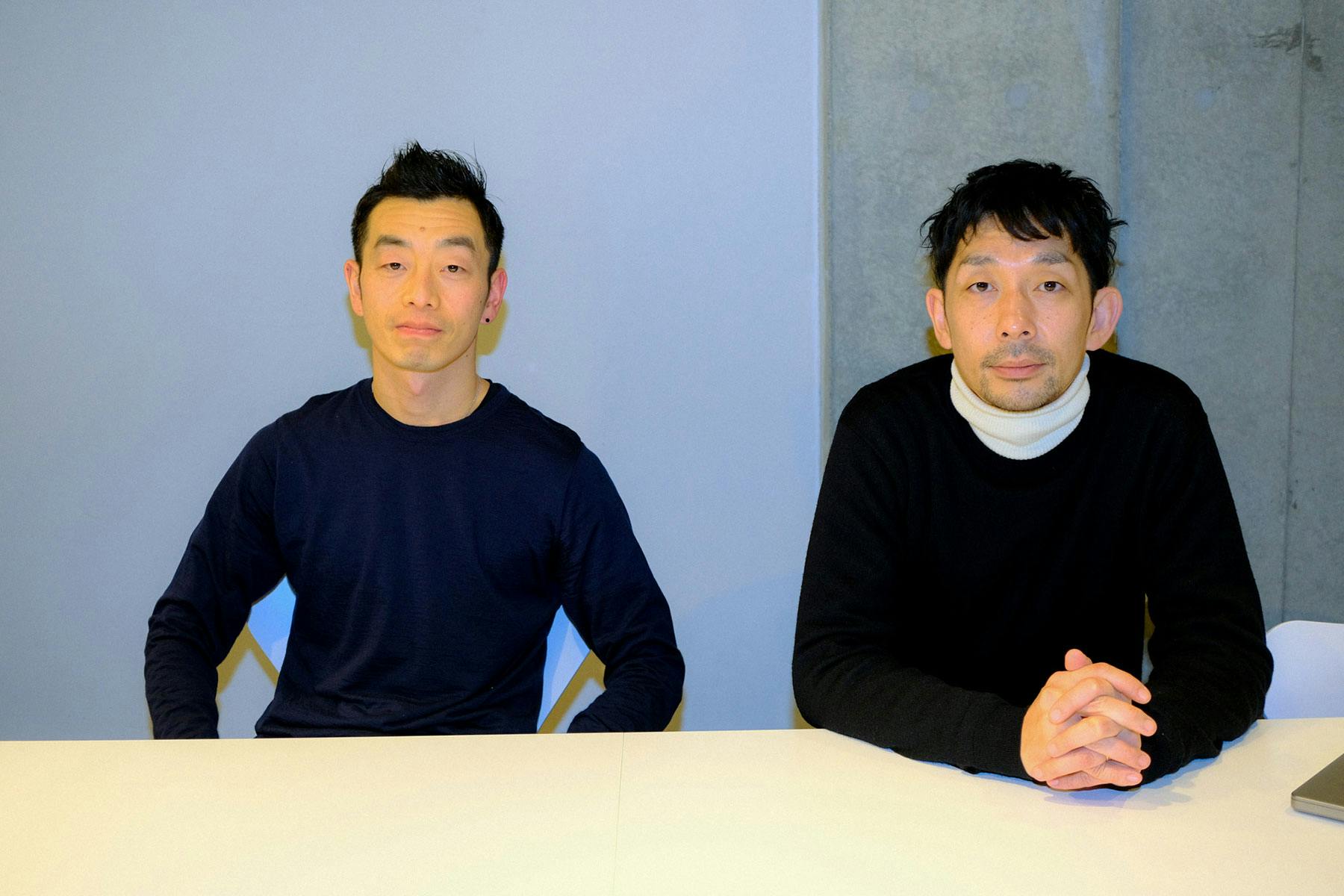
Kristen de La Valliere_ Can you please introduce yourselves and a little bit about your studio for those who are not familiar with it yet?
we+を初めてお知りになる方へ、ご自身の自己紹介とwe+について簡単にご紹介をお願いします。
Mr. Ando_ Hayashi and I established the we+ studio ten years ago in 2013 and now we have grown to have six team members and interns. We have three main business areas, one of which is a self-initiated project. The second is R&D, which involves conducting research together with people from other companies. The third is Design and Direction, a so-called design studio that mainly produces products, furniture, and interiors.
僕と林で2013年にスタジオを設立して10年になり、いまは6名のスタッフとインターンメンバーで運営しています。僕らの事業領域っていうのは主に3つあって、1つが自分たちの自主制作活動。そして2つ目がR&Dで、これは企業の人たちと一緒に研究をしていく活動になります。そして3つ目はいわゆるデザインスタジオとしてのデザインアンドダイレクションで、プロダクトや家具、インテリアを主に製作しています。
What are the differences between the first one, 'self-initiated projects' and the third one, 'Design and Direction'?
自主制作のものと、あのクライアントからの依頼を受けて作っているものの、違いはどんなところにありますか?
A_ The self-initiated projects are more activities based on independent production. We dig deeper into our own interests and materials and show them in Milan, Japan, and elsewhere, so we receive inquiries from client companies that are interested in seeing such things.
For the design and direction, Of course, if it's a material they already have or a problem in another area, we address it in our own way and output. Sometimes it becomes an installation; sometimes, it becomes R&D; sometimes, it becomes a product such as furniture.
活動のベースは自主制作。自分たちの興味やマテリアルを深堀して、ミラノや日本など国内外で発表しているので、そういうものを見て興味を持ったクライアント企業から声をかけてもらいます。もちろん彼らの持ってるマテリアルだったり、彼らの持ってる課題が別のところにある場合は、僕らなりの手法で料理してアウトプットする。それが時にインスタレーションになったり、R&Dになることもあるし、家具などのプロダクトとかになってくこともあります。
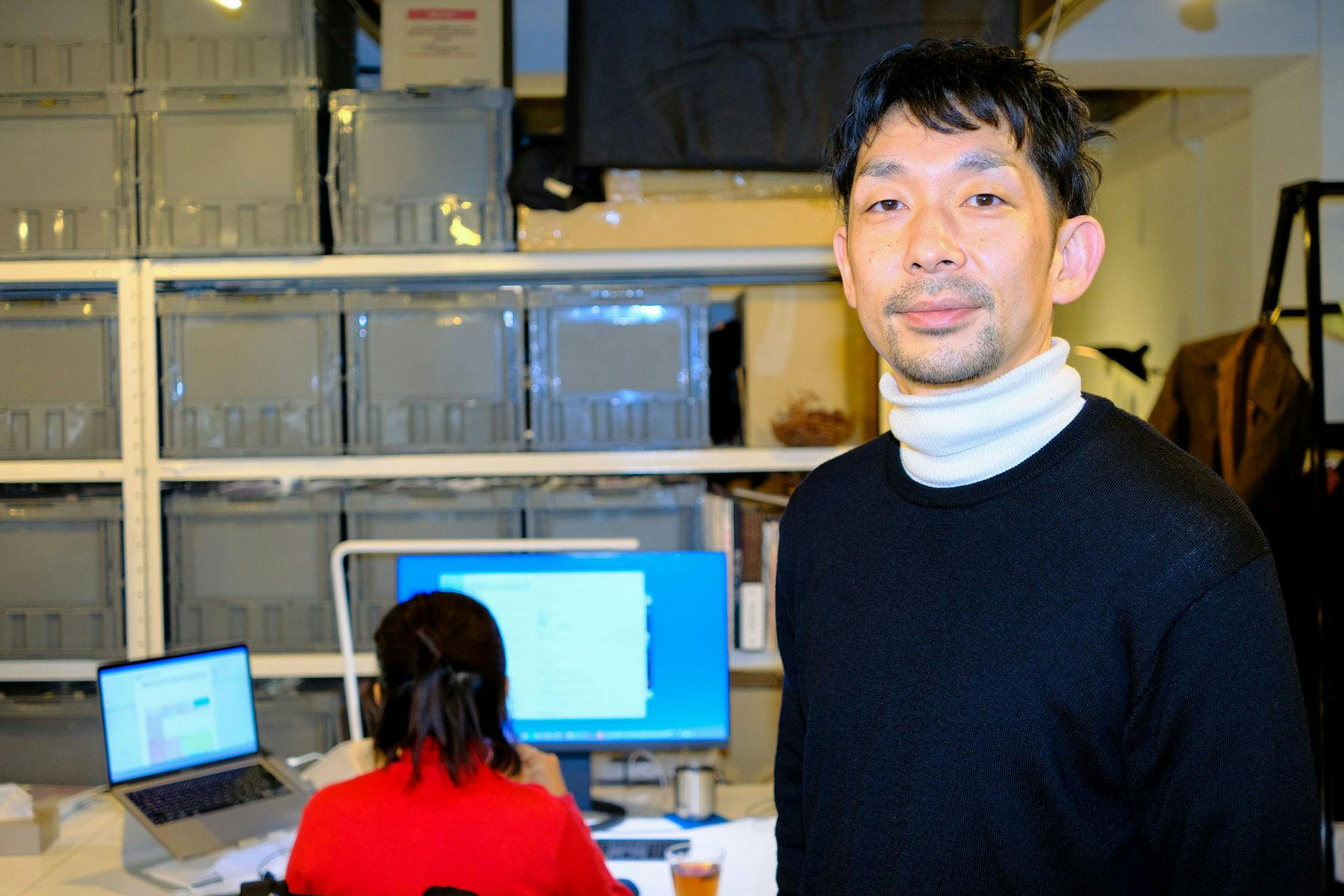
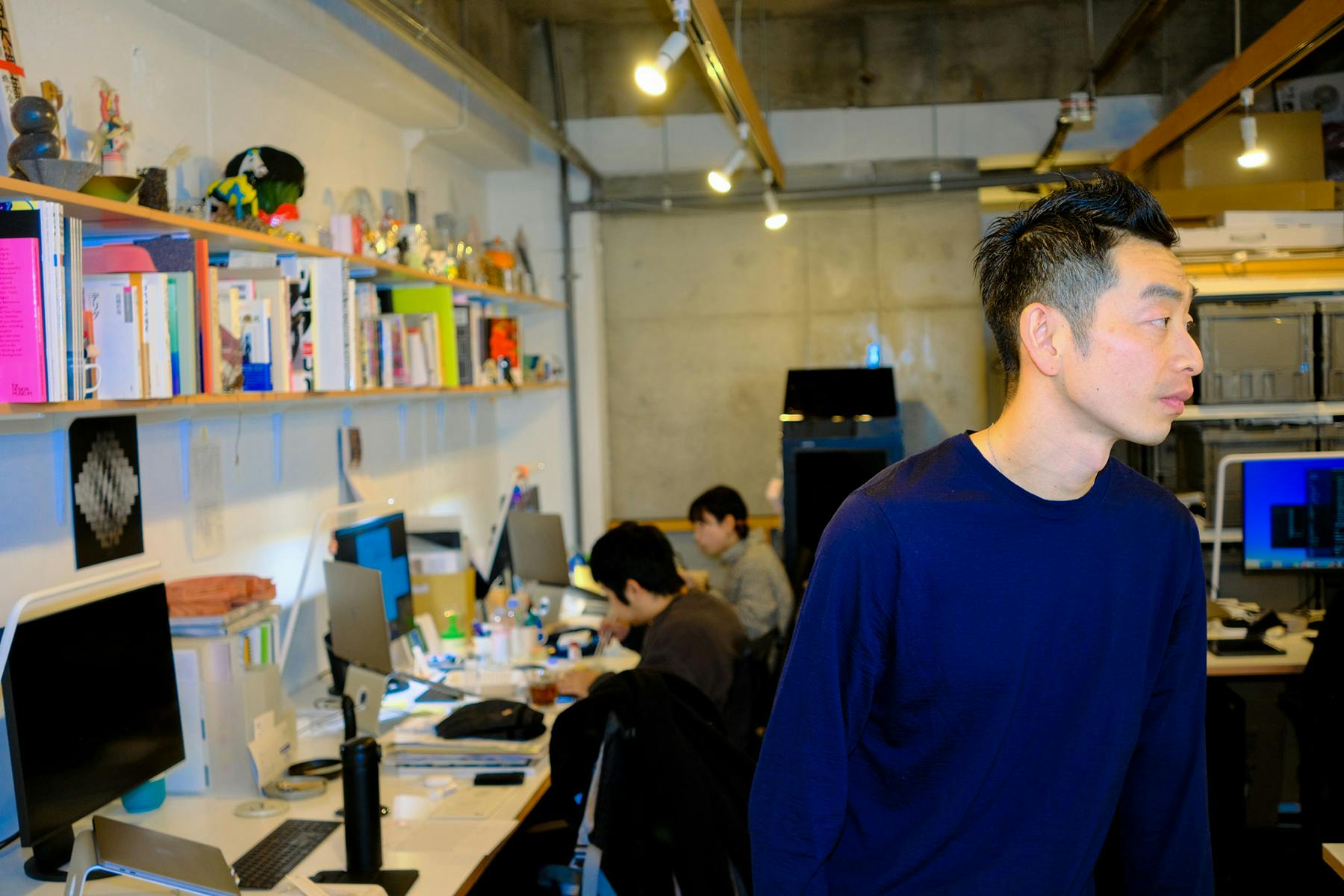

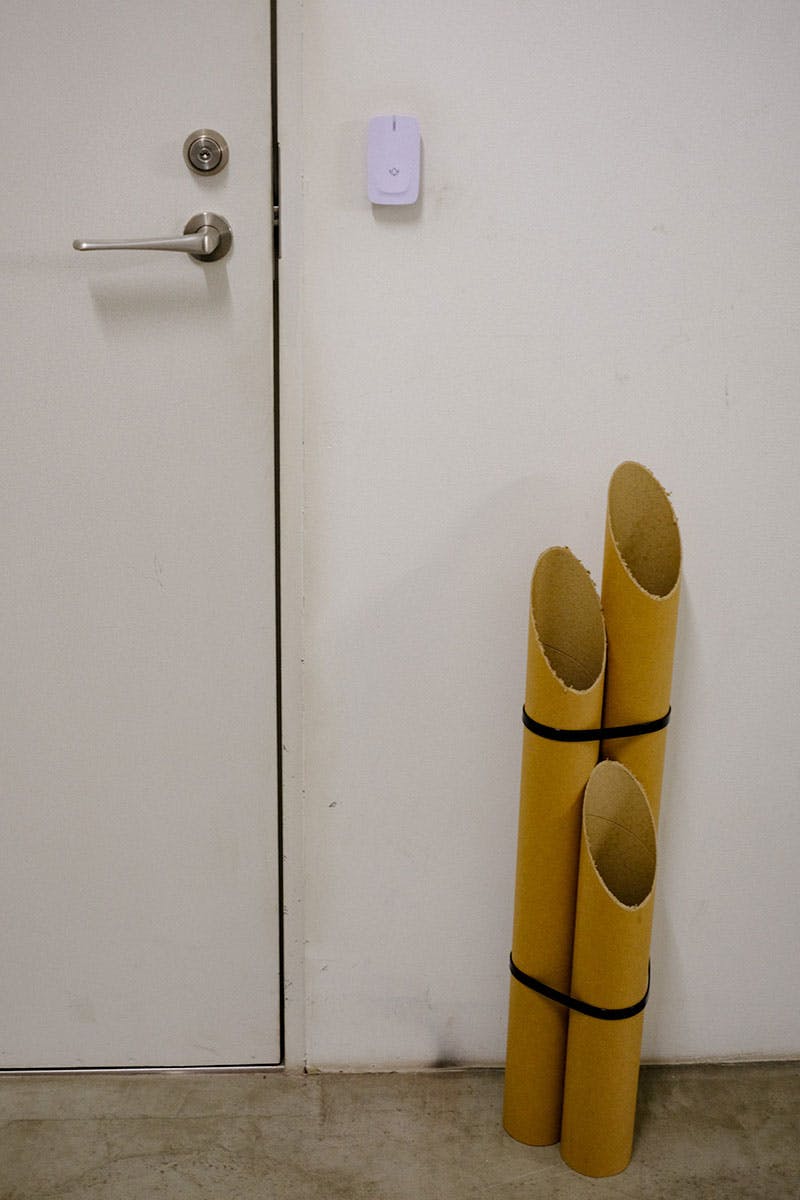
I’d categorise your work as contemporary design, functional art - if you will. Do you agree? In Japan, I have noted that the disciplines of industrial design, artisan craft and fine artists seem to be present, but very few practices bridge these categories — why is that?
we+のご活動をコンテンポラリーデザインやファンクショナルアートと認識しておりますが間違い無いでしょうか?また、日本にはインダストリアルデザインや工芸品、ファインアーティストなどが存在しますが、これらを横断して活動している方は少ないと感じています。なぜでしょうか?
A_ There is no doubt that we are in the position of contemporary design. Our aim is not to update existing methods or processes within the history of design but to create and employ design methodology from a different angle. It is a so-called 'design alternative', but when you think about what alternative design is, there are several possibilities. We are doing contemporary design, which is one of the approaches.
However, the people who do that kind of design are the minority in the Japanese design industry. It's hard to make money in this because the market is still quite small. In Japan, there are only one or two contemporary design galleries in Tokyo and not so many collectors. But in Paris, there are so many, and in London and New York as well. That's why it's a bit difficult to sustain a practice here solely in contemporary design.
我々の活動はコンテンポラリーデザインという立場で間違いありません。すこし大きな話になりますが、僕たちの活動はデザインのコンテキストとか、ヒストリーの中でそれを1つ更新していくということではなく、別の角度にもデザインを連れていくっていうことをしているんです。いわゆるデザインオルタナティブって言われているものなのですが、オルタナティブなデザインって何かって考えてくといくつかの可能性があって、そのアプローチの一つであるコンテンポラリーデザインを自分たちはやっています。
でも、そういうことをやってる人は限りなくマイノリティで、みんな王道のデザインをしている。市場はかなり小さくて、お金になりにくいからですね。 日本にはコンテンポラリーデザインのギャラリーが 1 つか 2 つくらいしかないですし、コレクターも多くないのが現実。世界を見ればパリやロンドン、ニューヨークでも人気です。だからこそ、日本においてコンテンポラリーデザインで生きていくのは少し難しいんです。
H
Japanese people are theoretical and thoughtful. After world war two, we focused on economics, and as a result, high economic growth made Japan very rich. I think the Japanese attitude is more and more theoretical and efficient. I heard another gallerist from the UK or US say that Japan is very small compared to the US or Europe. The city is very complex and compact. So that's why we are very theoretical and like efficiency. And I think contemporary is far from modernism. Modernism is simple and compact, so many Japanese people love modernism. That's why contemporary design is not that popular here.
日本人は過激で思慮深いですよね。 戦後、経済に力を入れた結果、高度経済成長により日本は非常に豊かな国になりました。これによって、日本人はますます過激で効率的になっていると思います。 英国や米国の別のギャラリストが、日本は米国やヨーロッパに比べて非常に小さいと言っているのを聞いたことがありますが、 都市は特に複雑でコンパクトです。 だからこそ、私たちは非常に急進的で、効率性を好みます。 そしてコンテンポラリーはモダニズムとはかけ離れていると思います。 モダニズムはシンプルでコンパクトなので、日本人はモダニズムが大好き。 これが、コンテンポラリーデザインが日本であまり人気のでない理由の一つかもしれません。
A
Thinking about a big river and then that is the mainstream, upstream is the past, downstream is the future. And then if the big river in the future is getting really tiny maybe. So we need a lot of branches. And one branch is getting bigger in the future maybe but nobody knows what it will be. So we need to find each perspective. And it's kind of the diversity of the design. We are not interested in the mainstream, but focusing on the branch.
In the 20th century, design was fully invented as an industrial design in Japan. so we don't want to buy anything anymore in this way. So the role of the design is slightly changing to suggest a new perspective to the world. The point of view of branch thinking is really important I think.
デザインのメインストリームを大きな川に例えてみると、川上は過去、川下は未来になりますが、 将来大きな川が本当に小さくなっていくのであれば、おそらく多くの枝葉になる起点が必要です。 この枝分かれした先が、将来的に大きな川になる可能性ももちろんありますが、誰も予測不可能。だからこそそれぞれの視点でポイントを見つける必要があって、これが一種のデザインの多様性だと考えているんです。僕たちは メインストリームの更新ではなく、違う角度から新しい流れを作っていくことに焦点を当てています。
20世紀の日本におけるデザインの変遷では、インダストリアルデザインとして大きく進歩してきました。このために世の中は既にモノで飽和状態です。なので、世界に新しい視点を提案するという役割において、デザインの方向が少し変わりつつあると考えています。
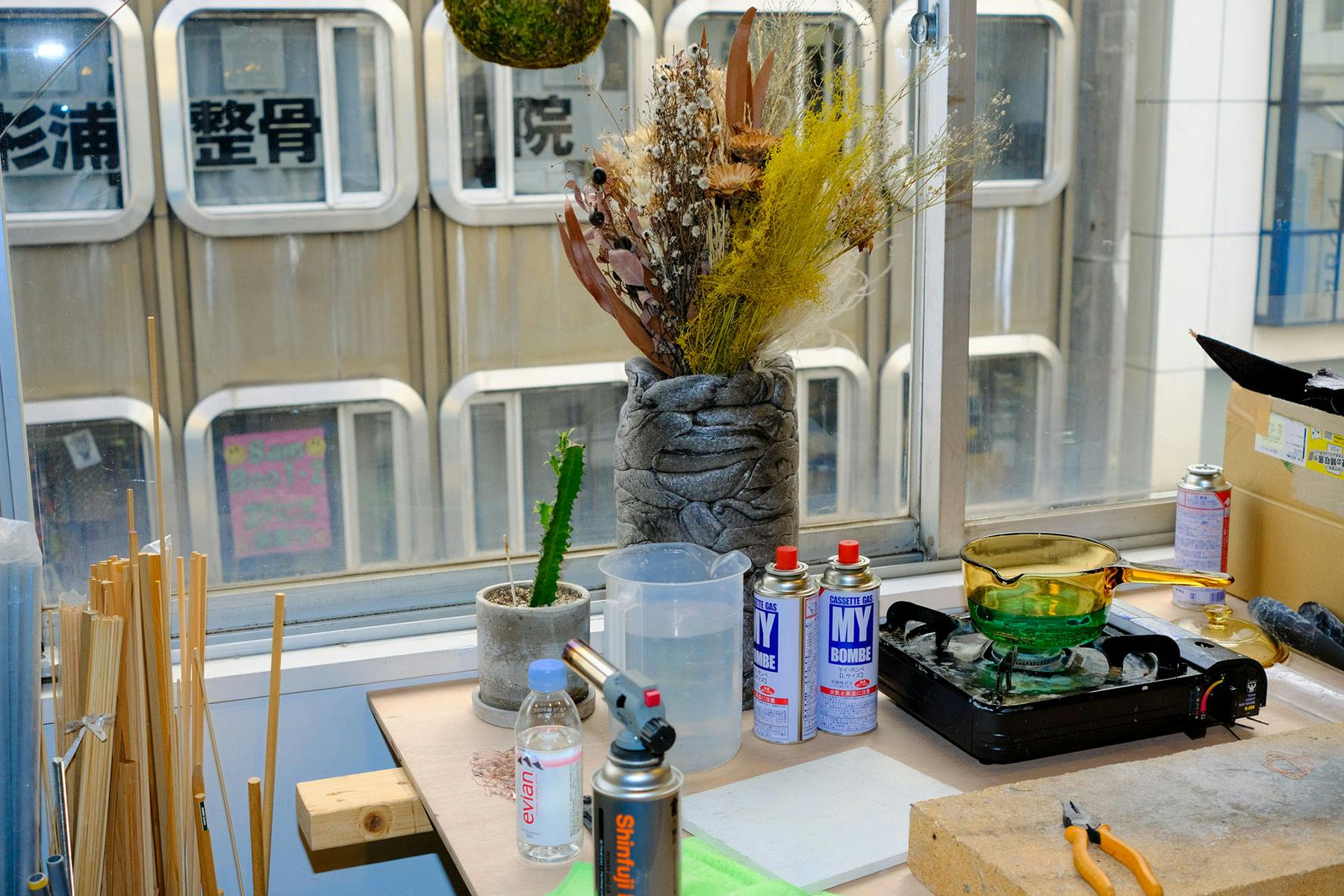
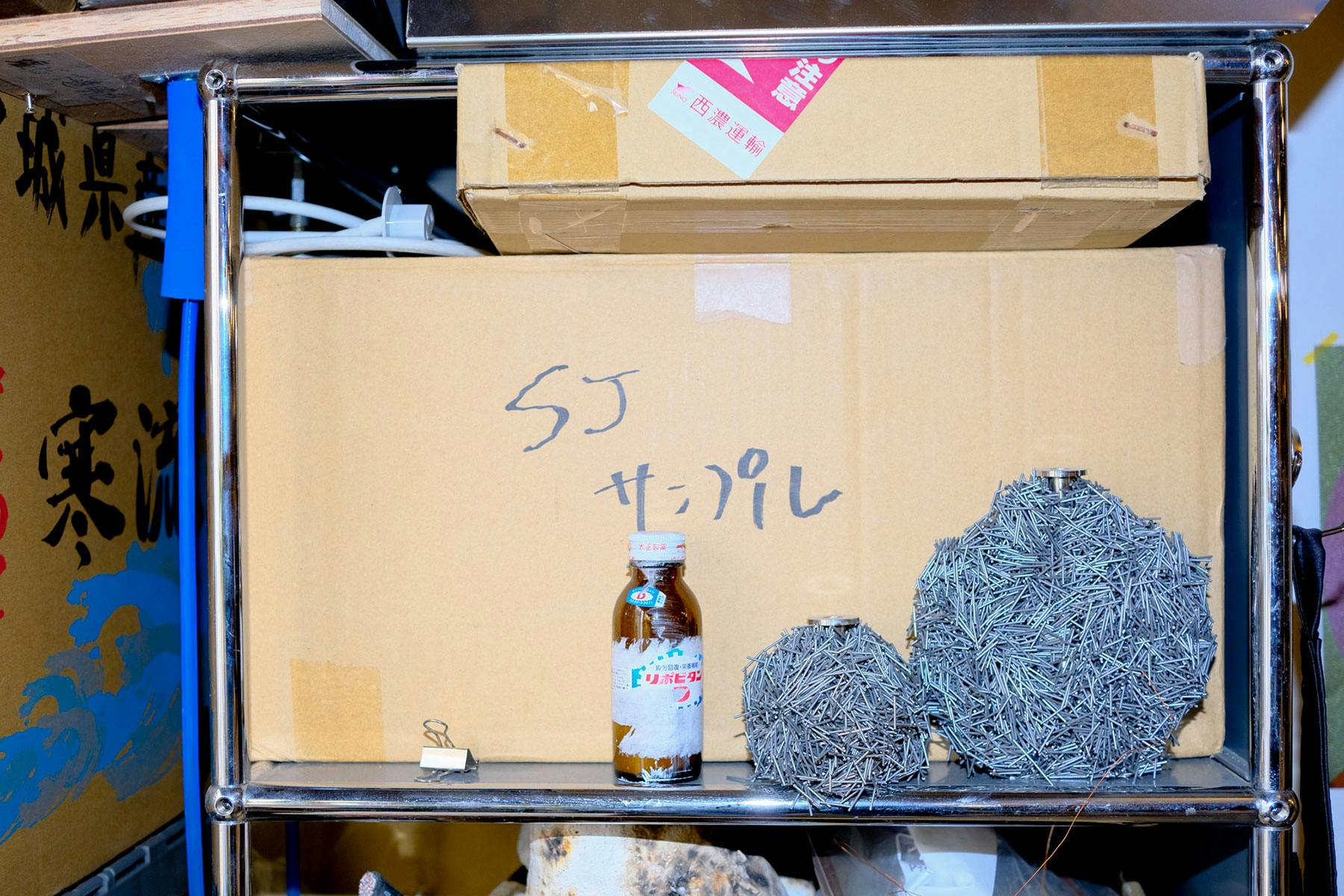
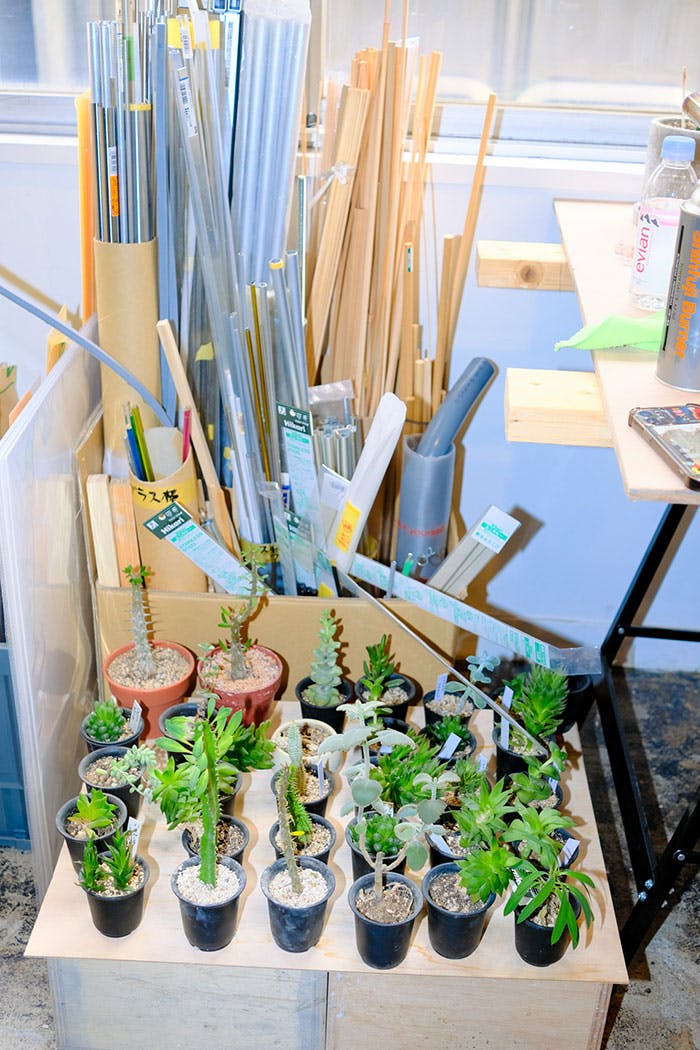
Do you think that local collectors would be interested in functional art in the future?
日本においても、個人のコレクターやギャラリストや施設の保有者は、将来的にコンテンポラリーデザインを所有したいと思うようになりますか?
A_ Yes, it’s possible. Still, lots of architects or interior designers are stuck on minimal design like Fritz Hansen or some other designers. So I think we need to push the market more. In the Japanese design market, we are kind of the pioneers of this discipline.
そうですね、ありえると思います。現状、多くの建築家やインテリアデザイナーは、フリッツ・ハンセンに代表されるようなミニマルなデザインを考えている方が多くいると感じていますが、私たちはある種のパイオニアとして、市場を牽引していく必要があると感じています。
H_ I think our generation's designers or architects are slightly changing, like our age, in their forties. Sustainability is important to us, and we are not willing to produce just anything, as there are already so many products out there. We [as a country] import lots of things from China, like chairs, tables or everything. So our creative practice aims to tackle a new perspective on how to produce and how to consume. This is our mission.
ただ私たちと同じ40代くらいの世代から、デザイナーは少しずつ変わってきていますね。 私たちデザイナーはサステナブルとは何かを追求するなかで、すでに多くの製品があるため、これ以上何か新しい物質を生産するということにはなりません。例えば、椅子やテーブルなど、あらゆるものを中国から十分な物量を輸入することができる。そうでなくて、我々は新しい視点を作りながら次の何かを探していきます。これがwe+のミッションとも言えるものです。
I read that you approach your creative practice by “reconstructing things from new angles with the concept of offering alternative options to society” — can you please expand on this and explain how you distilled your practice’s core “purpose” or philosophy?
「社会にオルタナティブな選択肢を提供するというコンセプトのなかで、物事を新しい角度から再構築する」ことで制作に取り組まれているという文書を拝見しました。これについて、活動の核となる目的、または哲学をどのように抽出したか教えていただけますか?
H_ In Japan, it is difficult to approach things which are different from the mainstream. I think that is because it is hard to earn money. We have a lot of peer pressure to do the same thing as everyone else.
日本ではメインストリームと違うところからアプローチするのは難しいですね。 稼ぎにくいからだと思います。 それに、周りと同じことをしなければならないという仲間からのプレッシャーも奥底には存在している。
So you're not pushed to be creative; you're more pushed to do things within a system.
クリエイティブになれと育てられるのではなく、同じことをしろ、と。
H_ It's very normal in Japan, actually. We don't like that kind of attitude, so we want to change it. That's why we chose an alternative path.
実は日本ではごく普通のことです。 そういう姿勢は僕たちの考えと異なるので、変えたいと思って、今のアプローチを選択しました。
How did you find that path?
どのようにしてそのアプローチ方法を見つけたのですか?
A_ It all happened gradually. At the beginning of my career, I had to think about and define exactly what I "should" do as a Japanese designer. I thought it would be very boring to be trapped in this Japanese hierarchy, and I honestly wanted to compete in a place where my work and activities were evaluated purely.
徐々にはじまったかな。日本人としてデザイナーとしてやっていくからには、どういう活動をするべきなのかっていうのは、ちゃんと設計しないとダメかなっていう風には最初に思っていた。 デザイナーとして、この日本のヒエラルキーの中に閉じ込められるっていうのは、すごく退屈だなとは思ったし、作品や活動をピュアに評価される場で勝負するっていうのが、素直にやりたかった。
I went to two universities, one in Japan and another at London Central Saint Martins. When I was studying in Japan, we were taught how to do mainstream design, which was just one method, one thinking and one philosophy. It was kind of the typical Japanese design at that time. And then moved to London; maybe you guys are already quite familiar with types of design education in London; it was open to be free and more conceptual. So students try to find a new solution which hasn't been discovered or applied yet. So when I went back to Tokyo, and I felt a little bit bored with the structure and hierarchy.
私はデザインを2つの学校で学びました。日本とロンドンのセントラルセントマーチンズです。日本で学生をしていた時に教わったのは、一つの方法、一つの考え方、一つの哲学が正しいというカリキュラムで、どれも当時の日本らしいデザインでした。その後ロンドンに移住して気づいたことは、ロンドンのデザイン教育は自由で、よりコンセプチュアルなものに対してオープンな環境だったんです。だからそこで生徒たちは、まだ見ぬ新しい解決策を見つけようとします。 ロンドンを経て東京に戻ってみて、その構造とヒエラルキーに少し退屈に感じたのをよく覚えています。

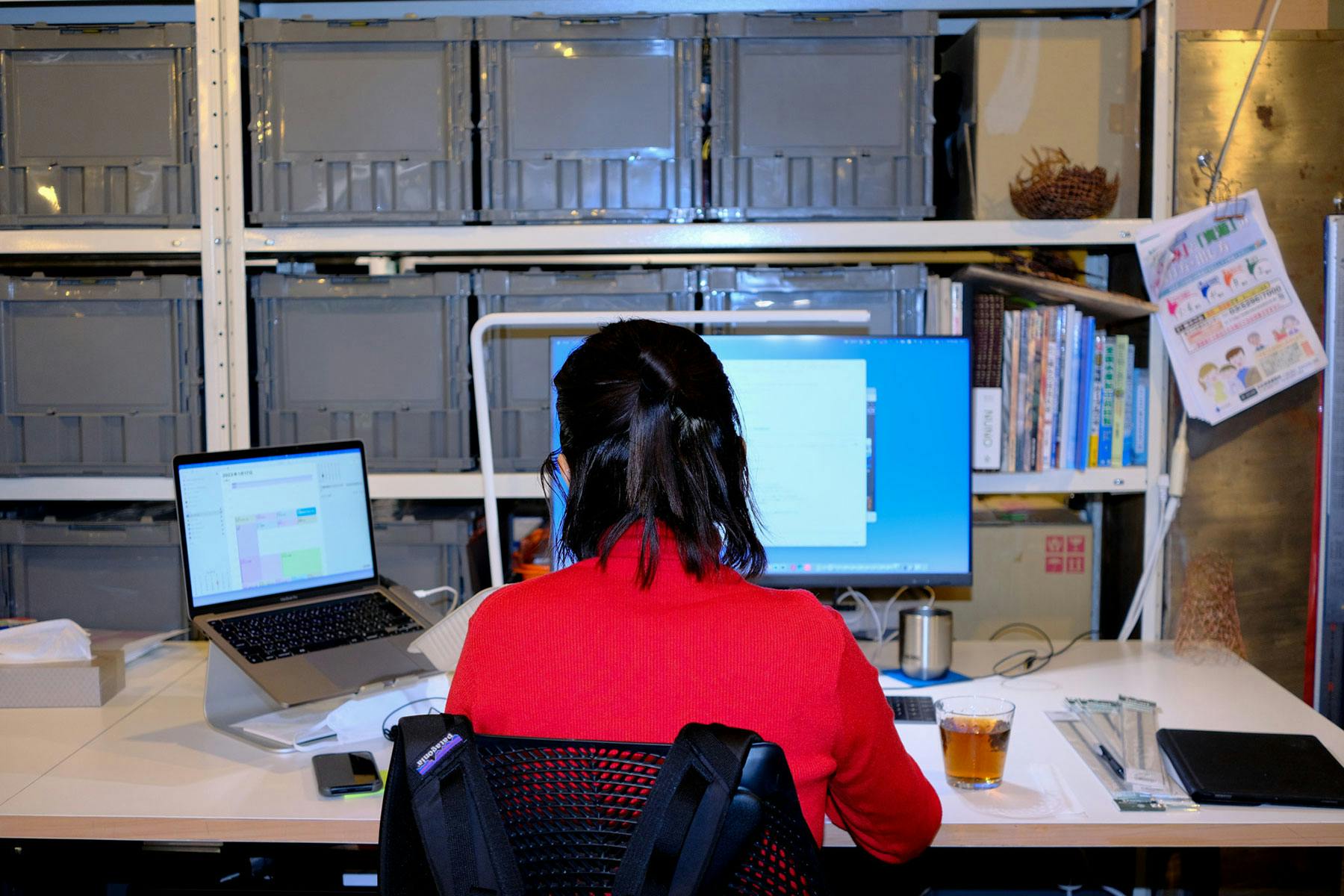
When you got home, with the new perspective that you could do things in a different way - what was the response from Japanese companies? Since you are doing things in a different format to the status quo, were they confused? intimidated, even?
育った場所に戻って、環境の大きな違いに気づいたんですね。we+の活動について、日本企業の反応はどうですか? ご自身の方法でプロジェクトを進めていく中で、彼らは混乱してしまうこともあるのでは?
A_ It's been about ten years since we started working in contemporary design. At first, I think we were treated as unorthodox, like "they're weird people" from the point of view of the people on 'the system' side. They must have wondered what we were doing or that what we were doing was not design. Although, recently, opinions have gradually changed. I feel that we are beginning to develop a foundation where people will properly evaluate us.
コンテンポラリーデザインの活動をし始めて10年くらい経ちますが、最初はきっと「変わった人たちだな」くらいに色もの扱いだったんじゃないかな、と思います。システム側のいる人たちから見れば、この人たち何やってんだろうとか、これはデザインじゃないよっていう風に思われてたんでしょうけども、ここ最近は徐々に見る目が変わってきたと感じるし、自分たちのことをきちんと評価してくれるような土壌ができ始めてきてるような気がしています。
A_ We established our creative practice in 2013, then we showed our pieces in Milan from 2014 and until 2016, we showed our pieces only in galleries abroad, not in Japan. We felt like it was difficult for Japanese people to understand our pieces, which is why we focused our efforts abroad. In 2016, the exhibition called HIGHLIGHT in Koishikawa was the first to show our pieces here at home.
2013年にwe+を設立してから2014年からミラノで作品を発表していますが、2016年のHighlightというイベントで発表するまでは、日本ではなくて海外でだけ作品を発表してきました。日本で発表するには評価されにくいことを理解していたからですね。
It's interesting; it seems like in every country I go to, all of the creatives say that they needed to get started abroad before. Same in the US. Same in France. If a French designer, for instance, was published in a magazine in New York without having much local interest, all of a sudden, their local recognition changes, and they start hearing, “Oh you were published in New York! I want to talk to you!”
これまで世界中でいろんな方にお話を伺いましたが、多くのクリエイターから最初は海外で始める必要があったと仰っていました。これはアメリカであっても、フランスであっても同様のようです。 例えばローカルメディアが注目していなかったフランス人デザイナーがいたとして、ニューヨークの雑誌に取り上げられると、「海外で掲載されたの!ぜひ話を聞かせてください!」と態度が一変するようです。
H_ I think the Japanese have the same inclination. Japanese people like things from abroad.
日本人も同じ特性が強いと思います。 日本人は海外のものが好きですからね。

Your practice is very material-driven — what does your material experimentation process look like?
we+の活動はマテリアルドリブンであると強く感じます。マテリアルドリブンな制作における実験のプロセスを教えていただけますか?
A_ So many people say that our process is material driven, but actually, we start with research. So we say our process is “research-driven”. We have that engine with the research, and the tire is the material.
私たちのプロセスはマテリアルドリブンと言われることが多いですが、実際にはリサーチがプロセスの始まりだと考えています。 なので、私たちのプロセスはリサーチドリブン。例えるなら、リサーチがエンジン、マテリアルがタイヤということになります。
What does your research process look like in that case?
リサーチはどのように始まりますか?
A_ For instance, we started the seaweed project two or three years ago with a professor of ocean economics. We research to find if there are new materials which can be created from the ocean and then try to think about economic development. Japan has the 6th largest EEZ [“exclusive economic zone,” or “EEZ” is an area of the ocean, generally extending 200 nautical miles (230 miles) beyond a nation's territorial sea, within which a coastal nation has jurisdiction over both living and nonliving resources.] in the world. Knowing that we are very much interested in an ocean-derived new material project. We are now trying to figure out how we can design with the materials we have created.
例えば、海洋経済学の教授と行政と数年前から始めたSeaweedプロジェクトでいえば、 経済の発展に寄与するような新しい物質を、海の中から見つけるために研究ををしています。実は日本には世界で6番目に大きな排他的経済水域があり資源が豊富です。海についてリサーチを重ねる中で、海洋物質の面白さに気づき、今はそれらを使ってどのようにデザインができるかを考えています。
And with the Nori [seaweed] project. Is it something you would like to scale so that people can buy this material?
このプロジェクトでは、人々が購入できるようなマスプロダクトの開発については考えていますか?
H_ In the future, we may be able to do it, but for now, we are trying to make limited edition pieces. Quality control is difficult for now, so we need to test a lot to ensure the highest quality.
将来的にはそうなるのかもしれませんが、今のところエディション限定でのプロダクトとしてデザインを検討しています。 品質管理がかなり難しいので、良い品質を保つためにはたくさんテストを重ねる必要がありますね。
A_ I think it's our role to think about the direction of the material and present the possibilities of the material, such as how it can be used in this way. How to scale it and implement it in society may be the role of someone else. Of course, the designer can also do that if they choose to.
私たちはマテリアルのその方向性を考えて、こういう使い方もあるんだよとか、その素材の可能性を提示してあげるっていうのが持つべき役割かなと思っています。それをどうスケールさせて社会実装させるかっていうのは、ひょっとしたら別の人の役割なのかもしれない。もちろん本当はデザイナーがやってもいいんだけど。
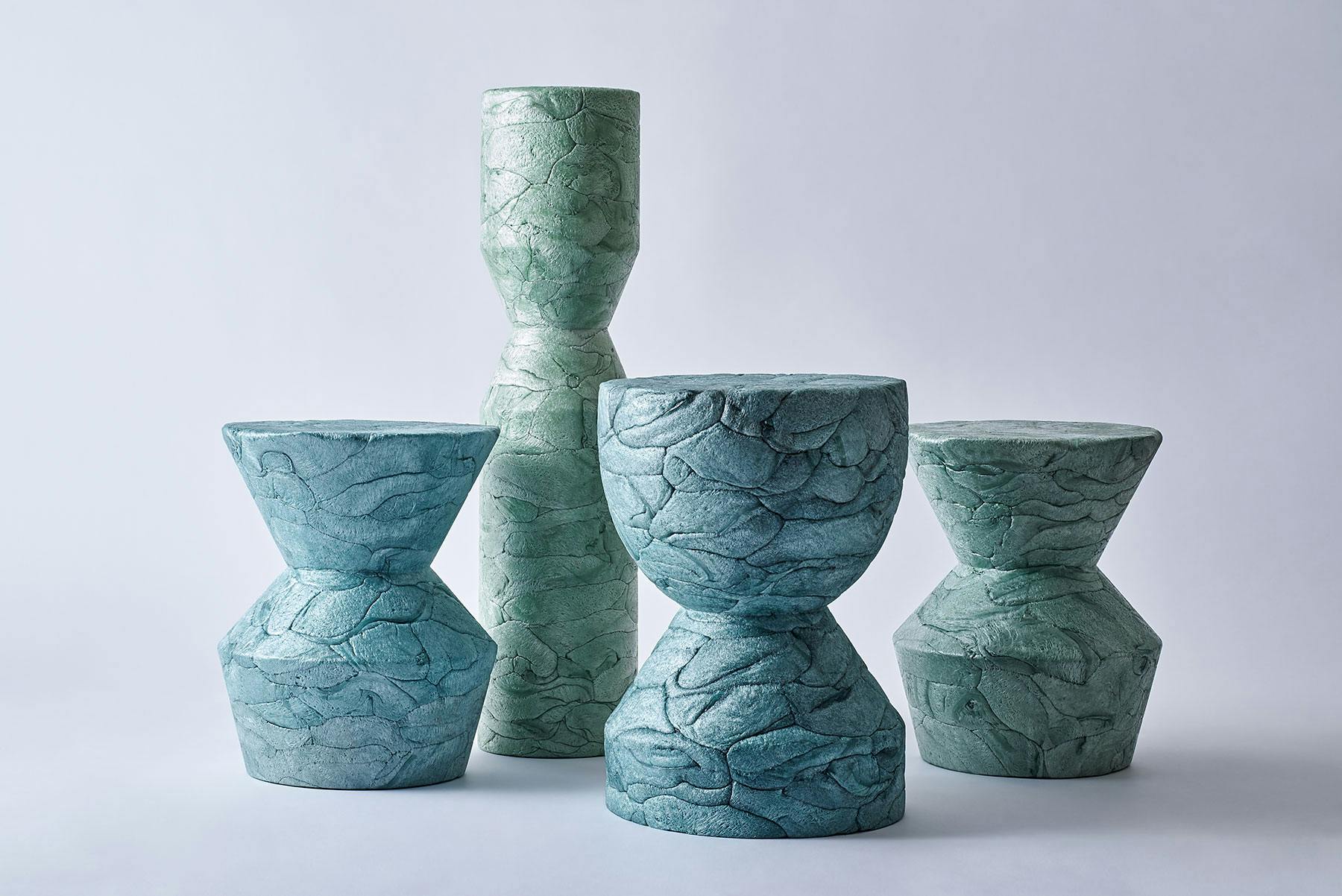
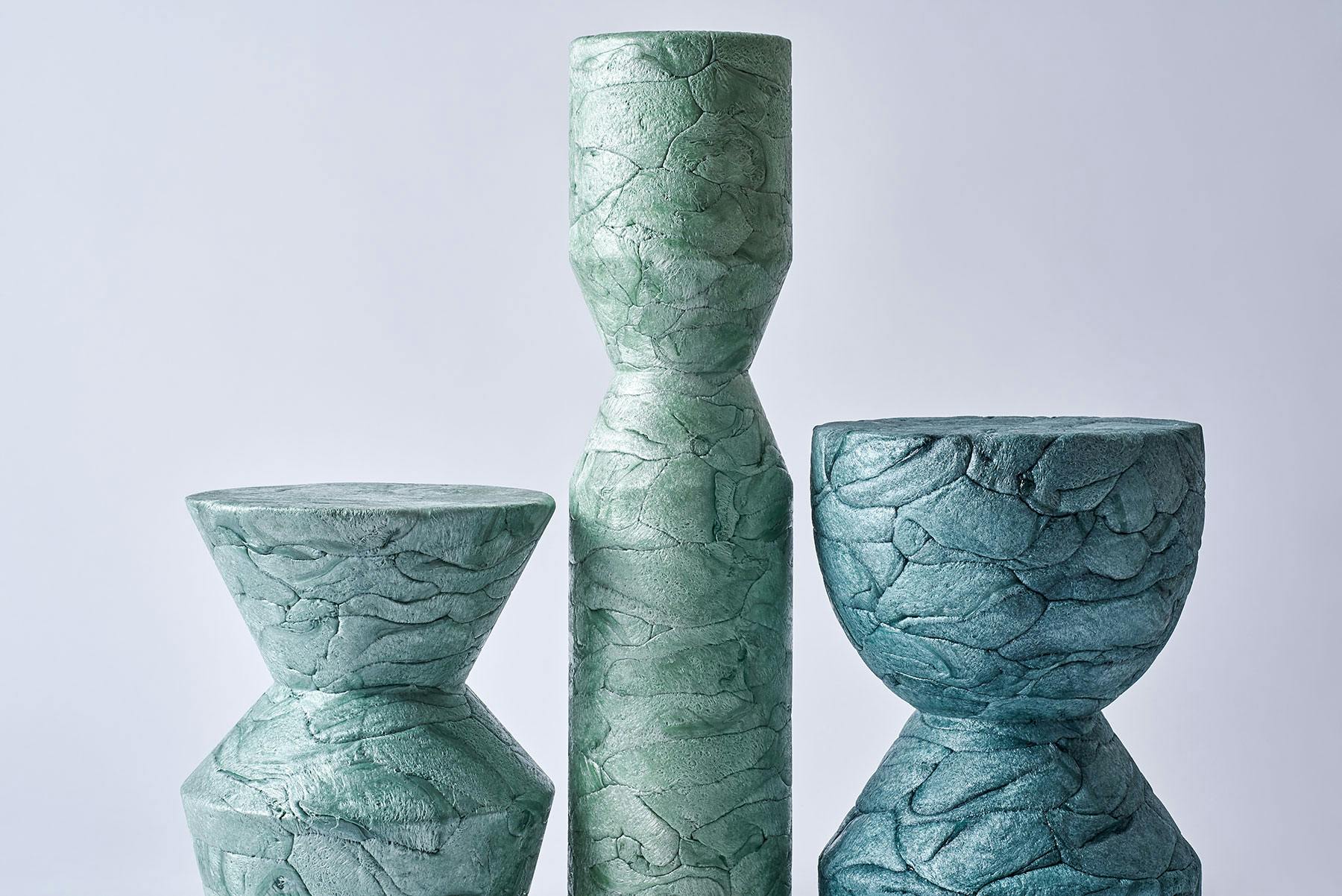
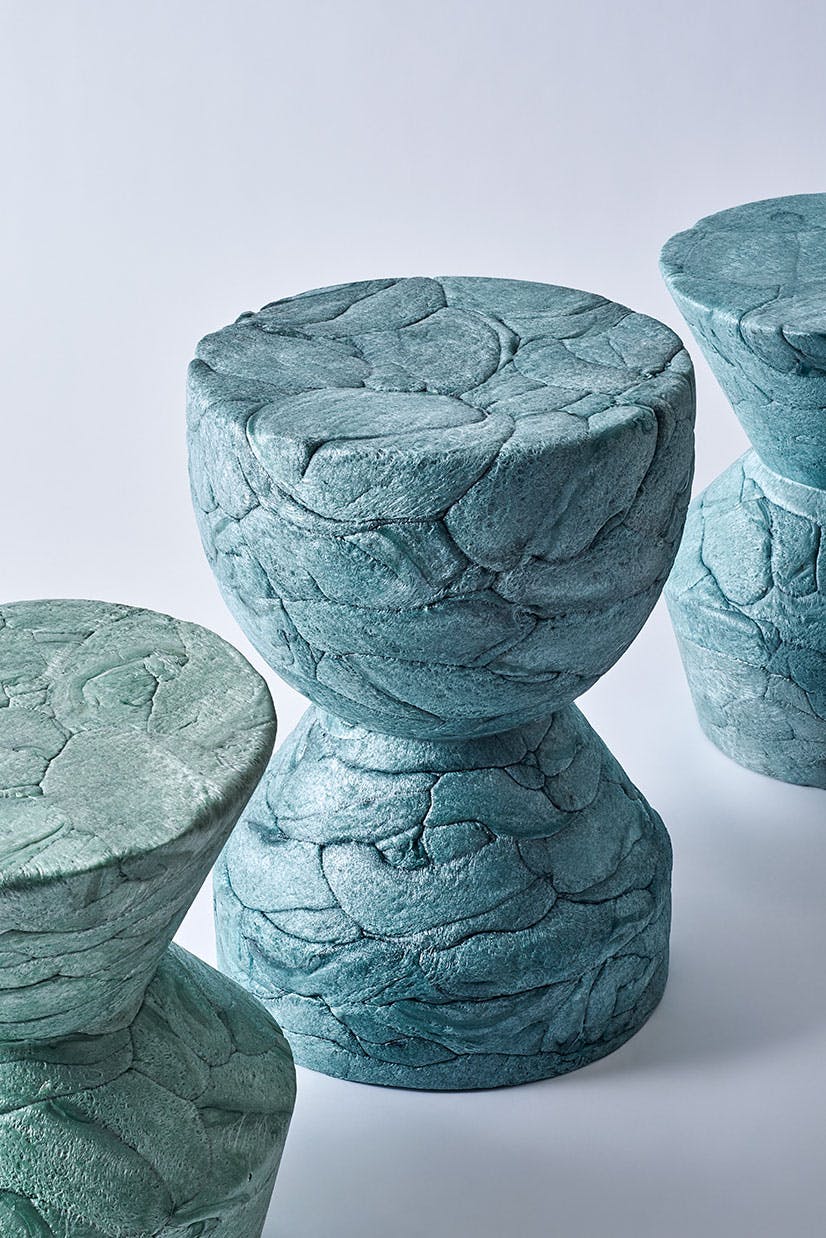
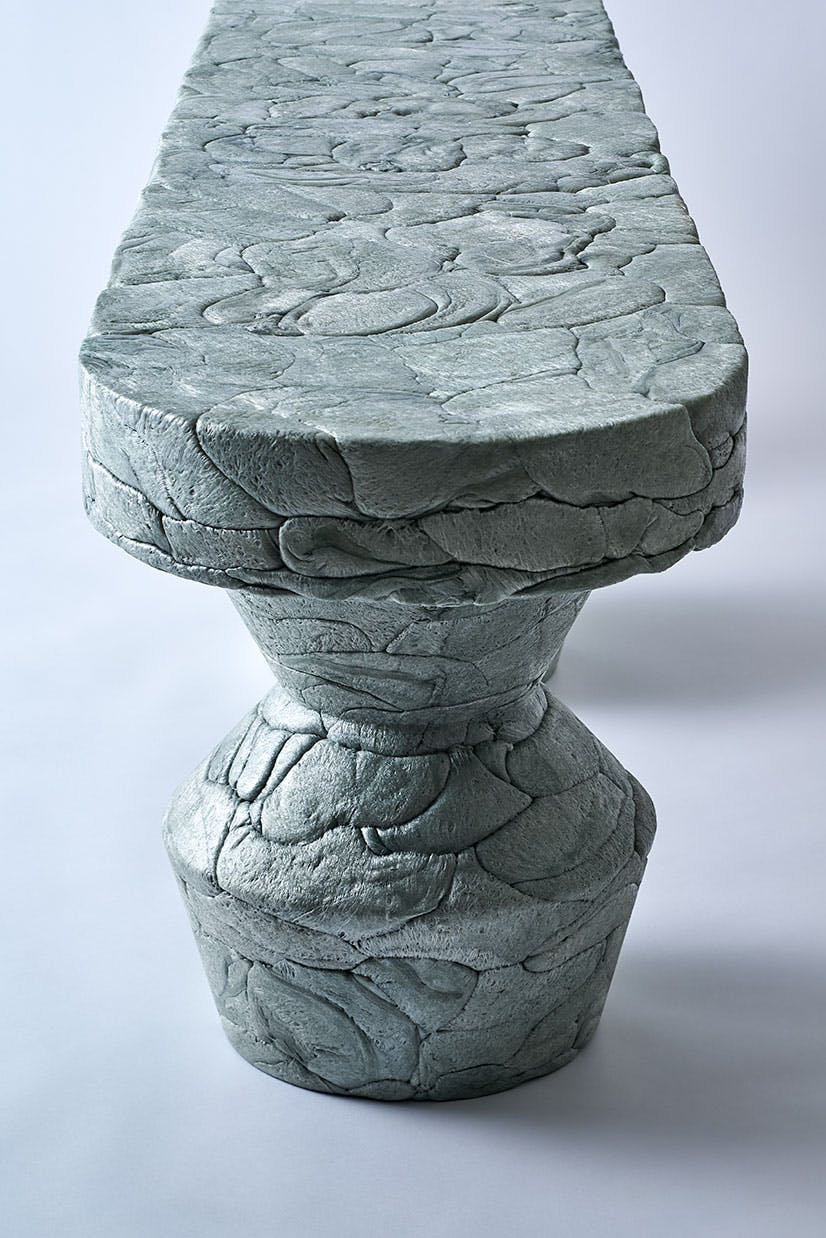
Do you feel like centuries of ‘Tactile Intelligence’ is being lost due to contemporary society’s dependence on technology? How will that affect the future of design?
現代社会においてテクノロジー依存していることにより、永きに渡って培われてきた.「触覚知性」が失われつつあると感じますか?またそれは、 デザインの未来にどのように影響するでしょうか?
H_ I think new design is only born from what we already know, which is why I think designers have to know the world deeply. Of course, new technology is always being developed, and we can live a very convenient life now, but designers need to focus on preserving what we have already learned as well.
新しいデザインは、私たちが認知しているものからしか生まれません。だからこそデザイナーは、世の中の事象を深く知る必要があると考えています。 もちろん、技術の進歩によって私たちはとても便利な生活を送ることができるようになりましたが、デザイナーは私たちが何を得て、何を失っているかを知らなければなりません。 そしてWe+としては、その失われてしまったものに焦点を当てています。
A_ It is true that tactile intelligence is being lost within technological development, and I think that is the trend of the times. It's the same for me, but since it's embedded in an iPhone or Macbook, I fully understand the benefits that come from the new technology, and that is huge. But before that, there is a real-world between me and the device. I wear real clothes, sit on a real chair and a real table. I don't think the real world will disappear in the future, so I have no choice but to compete here in the real world. But I'm thinking about what would happen if we bring something that has been lost to this world. That kind of approach sounds good within these trends.
技術進歩によって触覚知能っていうのが失われているっていうのは間違いのない事実で、そういう時代の流れになっていると思いますね。僕も自身もそうなんだけど、iPhoneだったりとか、マックブックの中に全ての情報が入っちゃってるから、そこから得られる恩恵っていうのはもちろんとてつもなく大きい。ただ、その前に自分とデバイスの間には リアルな世界があって、リアルな服を着ていて、リアルな椅子に座って、リアルなテーブルについている。リアルな世界っていうのが、多分この先も無くなることはないので、そこで勝負をせざるを得ないですね。でも何か失われているところを、こっちの世界に持ってきたらどうなるんだろうとは考えていて、例えば、いろんな素材を失われたところから持ってくるみたいな話は、新しい可能性の提示だと思うし、そういうアプローチも良さそうだなっていう気はします。
Do you think craft will be lost? Do you think that's going to die with the older generation?
工芸品は失われていってしまうと思いますか?次の世代へ継承するのは難しいことでしょうか?
H_ Actually, yes, we visited a lot of factories in Japan, and they all said that only the older generation was involved in their industry. There is no young generation to continue. So several techniques will be lost.
そうですね、これまで日本で多くの工房を訪問しましたが、高齢の世代が中心になっている産業ばかりだと聞いています。継続する若い世代がなかなかいないからですね。そうなってしまうと、いくつかの技術は失われてしまう。
A_ I don't think artisan crafts will ever drop to zero, but I think it's safe to say that the number of situations where craft items are used is steadily decreasing.
多分、クラフトが0になることはないけど、クラフト品を使うシチュエーションがどんどん減ってきてるっていうのは言えると思いますね。
You have a unique creative process which goes forward and backwards rather than merely linear. You have a concept which drives creation, resulting in an expression which then inspires changes to the original concept, and this process goes back and forth several times resulting in a totally new outcome.
Can you give us an example of a project of yours which followed this creative process and how it evolved in each step?
直線的ではなく前後に進む制作プロセスが特徴的であると感じます。 創造を駆り立てるコンセプトがあり、その表現が大元のコンセプトに変化をもたらし、このプロセスが何度も繰り返され、まったく新しい結果がもたらされます。 このプロセスをたどったプロジェクトの例と、各工程でどのように進化したかを教えてください。
H_ For example, our Refoam (2022) project. First of all, we didn't know the waste material, and my base material is very evil so we have to make use of it and make something new. That was the first concept. We went to the processing factory and received a lot of information from the people there. They said that styrofoam is already recycled a lot. Once they melt the styrofoam, most of it is exported to other countries, for example, European countries or Southeast Asian countries. It is also broken down into very small pellets and shipped to China to make very cheap plastic products sold in 100 yen shops.
Knowing this, we wondered if the current system is good for the environment or not. Shipping wastes a lot of fuel. So we started to recycle products here in Japan with our own hands and changed the concept to see the wasted material as an “indigenous material”.
Like this experience, a lot of information about this process is hidden; we [as a society] do not know a lot of things, but that doesn't mean that they don't exist. As Hokuto first said, we do a lot of research to learn as much as we can. When we update and apply the information, we change the shape of the project, design, or even the material.
たとえば、Refoam (2022) プロジェクトで言えば、まず第一に、私たちは廃材について無知に近かったんです。今回の母材は非常に質が悪いのですが、それを利用して何か新しいものを作るというのがこのプロジェクトのコンセプトでした。中間処理工場に行って、そこで働く方たちから話を聞くと、発泡スチロールはすでにたくさんリサイクルされていると。発泡スチロールを溶かしてヨーロッパや東南アジアの国に輸出し、非常に小さなパレットになります。これらが中国にまた輸出され、100円ショップで売られている安価なプラスチック製品になるんです。私たちはそれを聞いて、このシステムが環境に良いかどうか疑問に思いました。輸送するだけでも多くの燃料を浪費しますよね。そこで私たちは、廃材を「土着の素材」と捉える発想に転換しました。海外へ輸送せずに日本で、自分たちの手で製品をリサイクルしようと決めました。
このように、世の中には多くの情報が隠されています。認知できていない多くのものが存在することを私たちは意識すらしていません。 安藤が最初に話したように、私たちは情報を得るために多くの調査を行います。情報を更新することで、デザインの形状や素材を変えていきます。
A_ We always change through the process. We do research, and we design, or we produce new materials at the same time within one project. I think it's really hard to make that one piece because we need a lot of research and material tests. Sometimes, it's a little bit difficult to work with the clients because clients are only looking in one direction. When we show 3D rendering to clients of what we are doing, and they say, "Yes, let's do it!". This kind of process is boring for us. So when we show the first idea, we always say this is not the final answer and will possibly change with another idea.
私たちはプロジェクトの中で、研究とデザイン、新素材の開発を同時に行い、常に良いと思う方向へ転換しています。研究とテストの蓄積が重要なので、一つのものを完成させるのは本当に難しいことです。クライアントは方向転換ではなく、前に進むことだけを良しとする場合が多いため、協業するのが少し難しい場合もありますね。3Dモデルをクライアントに示すと、クライアントは「いいですね、進めましょう!」といってくれますが、それだけのプロセスは私たちにとってつまらなく感じます。なので最初のアイデアを示すときは、これが最終的な答えではなく、別のアイデアに変更する可能性があると常に伝えるようにしています。
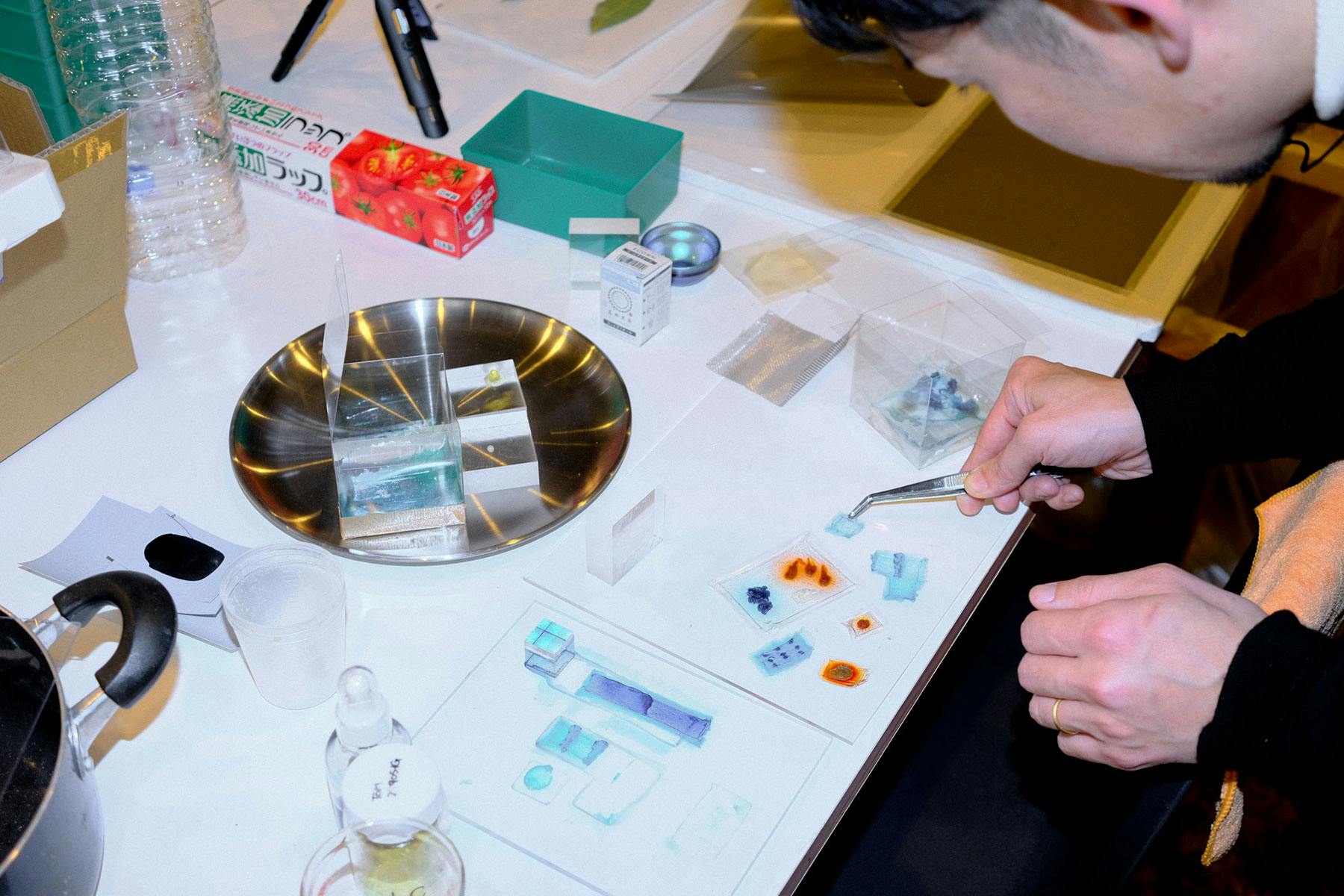
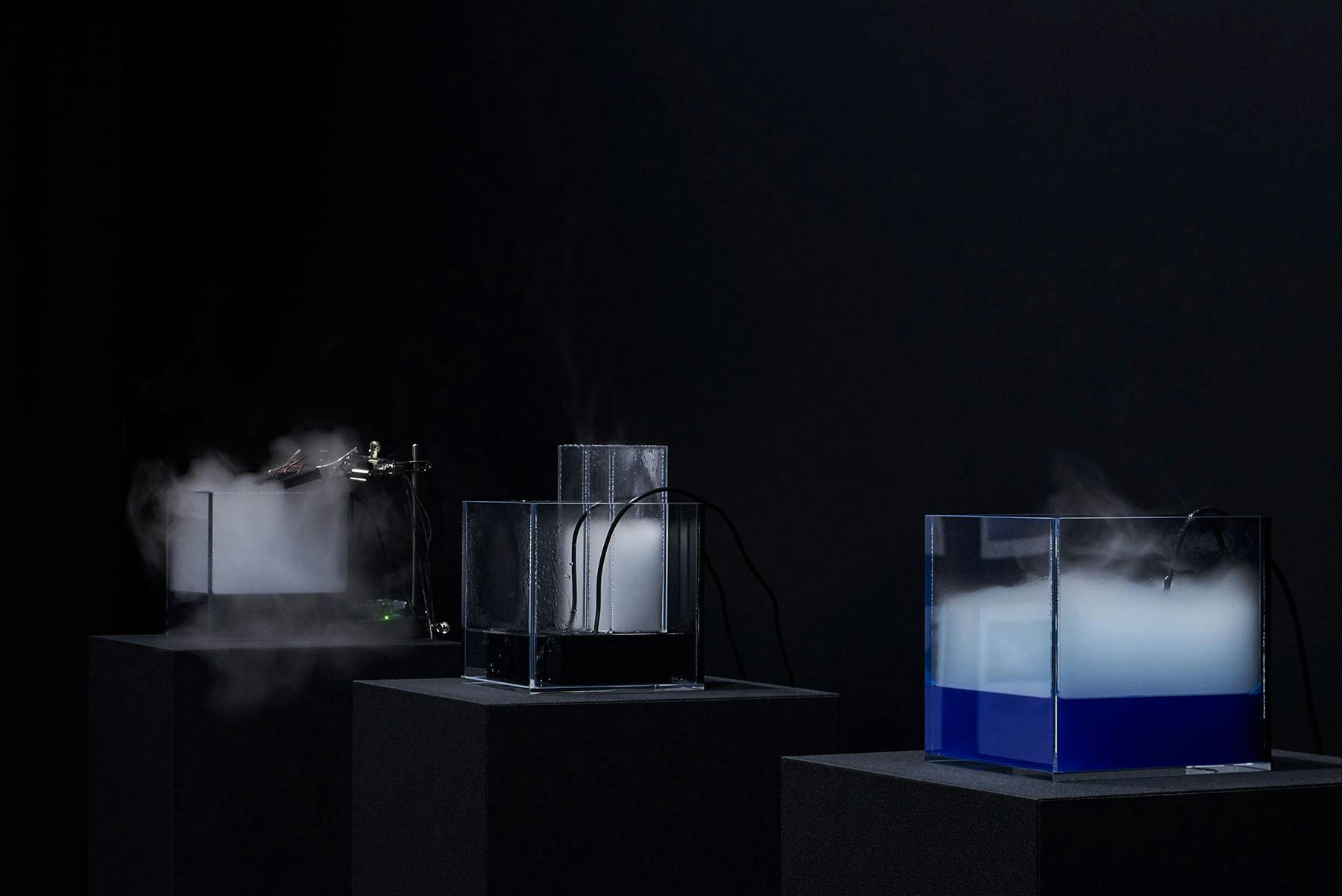

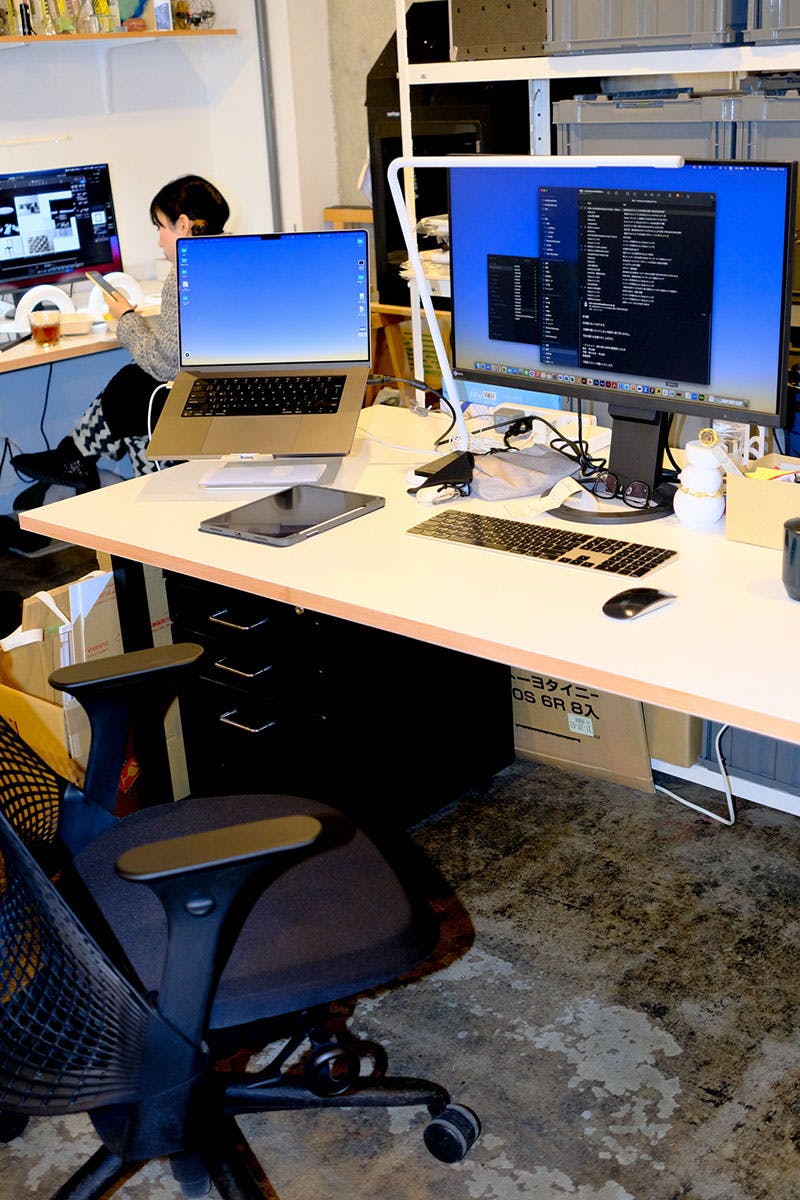
The creative process of many of your projects is inspired by Natural Phenomenons — how did that come about and how do you integrate control, as a designer, to generate new but familiar expressions? How can that lead to functional design solutions linked to the climate crisis?
we+の多くのプロジェクトにおいて、制作プロセスが自然現象にインスパイアされているようです。アイデアはどのようにして生まれ、またデザイナーとしてどのように制御をし、新しくて親しみやすい表現を生み出していますか? また、それはどのようにして気候変動の危機に対して機能するソリューションにつながるのでしょうか?
H_ Our design might not solve the climate crisis but can change people's minds. For instance, Waft (2022) was the installation in the Nature study: Mist project. People who live in cities have lost touch with nature in the first place. By doing this, I feel that even if people who are desensitised to the climate in the first place become more sensitive to it, their views on climate change will change.
私たちのデザインは気候危機を根本的に解決することはできないかもしれませんが、人々の考えを変えることならできます。たとえば、Waft (2022)というインスタレーションでは、自然現象、中でも霧をテーマにしたインスタレーション。都市で生活してる人って、そもそも自然に触れなくなってるから、自然にちょっとでも触れることで、その時の感情みたいなものを取り戻してもらおうと思ったのが、試みの1つでした。そういうことをすることで、そもそも気候に対して感覚が鈍感になってる人の感覚を敏感にするだけでも、ちょっとはその人の気候変動への見方は変わっていくのかなっていう気はしますけどね。
A_ We want people to sympathise with our work. What is necessary to do so is probably important to capture something like a common primitive experience and to convert things that everyone has seen, such as natural phenomena, into works. For example, the beauty of the setting sun or the fluctuation of the water's surface. I think that such things are understood not only by Japanese people but by people from all over the world. It is important for us to have people understand and empathise with the work by making use of such things.
私たちは作品に共感してもらいたいなって思ってるんです。 そうするには何が必要かっていうと、多分共通の原体験みたいなのを捉えることが重要で、それは誰しもが見たこと、見たことのある自然の現象、みたいなものを作品に転用することで、作品に共感してもらえるんじゃないかなと思ってる。例えば夕日の美しさだったりとか、水面の揺らぎだったりとか。そういったものって日本人のみならず、どの世界の人たちでも理解してくれるものだと思う。そういうのを作品に生かすことで、作品を理解・共感してもらうのが私たちにとって大切なんです。
H_ We approach to maximise the beauty which the material has by removing another noisy element. For example, we wanted to show the movement of the mist, so we tried to maximise that effect by using a lot of different technologies. When we exhibited, we hid the machinery in a box behind the wall where the viewers were only able to see the mist movement. I think this is very Japanese style because it is a very complex project where the outcome looks simple, but you can focus on an immersive natural phenomenon right in front of you.
私たちのアプローチにおいては、素材が持つ美しさを最大限に引き出して、ノイズとなるような要素を排除することも重要なことの一つです。 例えばWaftでは、霧の動きを最大限に見せるために、様々な装置を使ってその動きを表現していますが、人々が霧の動きだけを見ることができるように、壁の後ろの箱に機械を入れ、ノイズになる装置たちを見えないようにしました。たくさんのものを動かしていますが、一見とてもシンプルな構造に見えるようにしています。これはとても日本的な表現方法だと思いますが、目の前の自然現象に没入できるように表現しています。
Your project ‘Nature Study: Mist/Waft’ experiments with many visual applications of the natural element ‘mist’. Can you explain the Japanese’s relationship to nature and how this is reflected in your project?
‘Nature Study: Mist / Waft’では、自然の要素である霧を実験的に取り入れられています。 日本人と自然との関係、そしてその関係はこのプロジェクトにどのように反映されているでしょうか?
H_ Japan is surrounded by the sea, and we have a lot of mountains and trees, and all have four seasons. I would say the Japanese mentality is related to Buddhism and Shinto. Compared to them, the mentality or attitude of Christians seems kind of “controlling”. Also, Japan has a lot of natural disasters, for example, earthquakes or typhoons. We know that we cannot control nature. We let nature be as it is. It's a kind of basic mentality of all Japanese people.
日本は海に囲まれ、山や木々がたくさんあり、そして四季があります。 日本人の考え方の根本には仏教と神道が深く関係しているのではないでしょうか。 キリスト教徒は日本に比べて、自然に対してある種”支配的”かもしれません。日本人は地震や台風などの自然災害が多いので、そもそも自然をコントロールすることはできないというのを理解しています。 自然をそのままに受け入れることが、日本人の美的感覚のようなところに結びついているのでは。
A_ When I was doing research on mist, I found a lot of the words for the phenomenon of "mist" in ancient literature, such as Manyoshu and Kokin Wakashu. There were many idioms and expressions linked to mist and fog. I learned that since ancient times, the Japanese people have had a way of comparing their feelings to nature and mist.
霧についてリサーチをしてた時に、例えば万葉集とか古金和歌集とか、本当に古くからの文献の中に”霧”っていう言葉がたくさん出てきたんです。霧がついた慣用句とか、霧のついた表現みたいなものがたくさん出てきた。日本人が古来から自然や霧に対して、日本人がこう気持ちを照らし合わせてくる存在だったということを知ることができました。
H_ We also have thousands of words to describe "rain" in Japanese; each is different depending on the season, raindrop size and so on. We realised that the Japanese have a very sensitive connection and feelings related to the nature around us from very ancient times. We try to show that in the Nature Study: Mist exhibition.
例えば「雨」を表現する言葉だけでも日本には1000以上あって、季節や雨粒の形などによってそれぞれ異なります。 日本人は昔から、自然をとても敏感に捉えているんです。なのでNature study : Mist (2022)で自然を深く理解し、自然と交友関係を作る方法として展示空間を作り上げました。

How can designers approach what you call a city’s ‘Indigenous Material’, mass waste? Where can designers start when problem-solving in this domain?
それぞれの都市で生まれるマテリアルとして捉えた大量の廃棄物に、デザイナーはどのようにアプローチできますか? この分野で問題を解決するとき、デザイナーはどこから始めればよいでしょうか?
A_ They can start by visiting the place where the waste is disposed of and an intermediate processing plant that I mentioned. Of course, I think it's important to do research in front of a computer, but I think it's better to see what kind of issues there are in the flesh. It's so simple and obvious, but very few people do it. Fieldwork gives us a lot of hints about things we want to pursue later.
廃棄される現場や、先ほど話に出たような中間処理工場に足を運ぶことですね。パソコンの前でリサーチをするっていうのももちろん重要とも思うんだけど、まず現場を見て、そこで課題を知ることが大切だと思います。意外とシンプルなことなんですが、やっている人が結構少ないんです。私たちからすればすごくラッキーなことかもしれないけど、フィールドワークをすればいろんなヒントが転がってて、やりたいことがいっぱい出てきますよ。
H_ Using waste materials is very important. Although from the beginning, it is very important to choose which material we use and what kind of design we should do. If we change the material or change the assembled parts, we can easily separate everything and try to eliminate all the waste within the circular design.
廃材を使うこと自体とても大切ですが、どの素材をどう使うか、どんなデザインにするかという要素がとても重要です。 素材を変えたり、組み立てるパーツを変えたりすれば、簡単にバラバラにできる。私たちも循環型デザインの考え方の中で、廃棄物を無くす方法を見つけていきたいと思っています。
A_ Waste material is quite good, I can say waste material is generally cheaper than creating new material from scratch. So especially for young students or young designers, I think it's better to use waste material as it is free in many cases.
それに廃材って素材としてかなり良いですよ。一般的に、廃棄物は発生するものよりも安い。 特に若い学生さんや若いデザイナーさんにとっては、廃材が無料なことが多いので、どんどん使ったほうがいいと思いますし、そこから色々なデザインや素材を見つけることができると思います。若いデザイナーは素材を触って、素材の味を確かめていくべきだと思いますね。
What is next?
今後のご活動は?
H_ We want to push our attitude throughout the Japanese design industry, which is so closed, not open. We are trying to break that kind of thing.
日本のデザイン業界で、私たちの活動を広げていき、閉鎖的な環境を打破したいです。
A_ We also want to show our studio's thinking and approach to the rest of the world as well. I think Japanese design thinking, such as minimalism, for instance, and some other typical Japanese ideas, are equally important.
それに、世界に向けてももっと発信していきたいです。特にヨーロッパやアメリカのようなマーケットにアプローチしたいと考えていて、私たちのアプローチの仕方は日本以外の国においても多くの学びとインスピレーションのヒントが隠れていると思います。





















